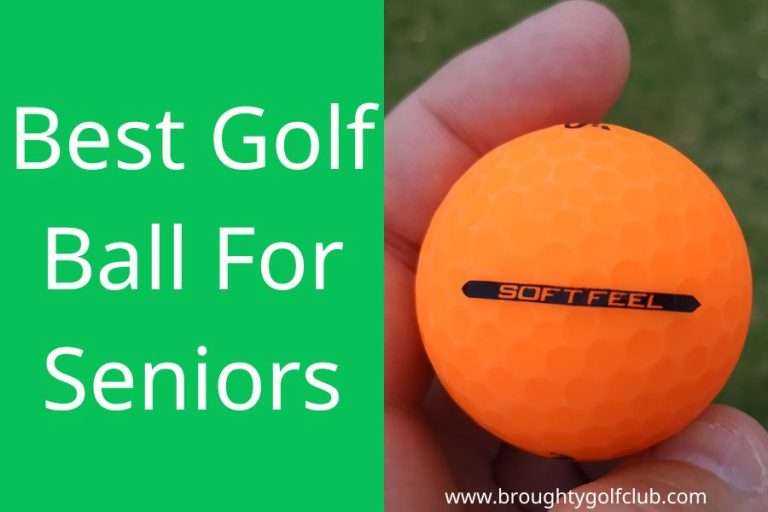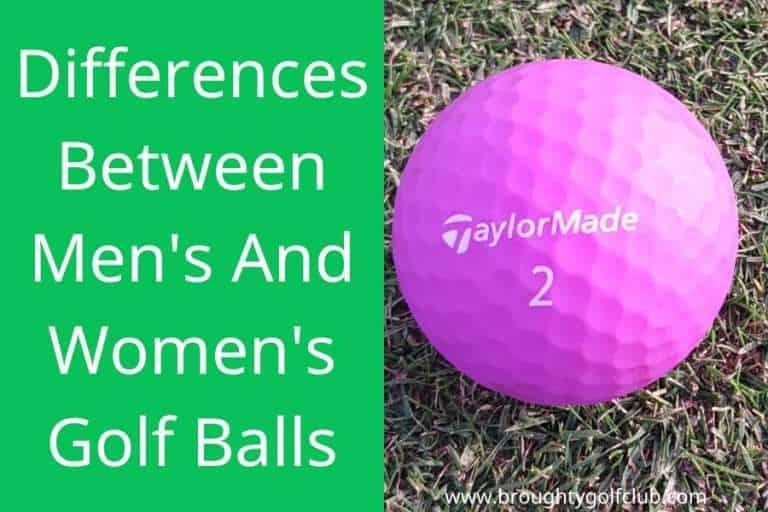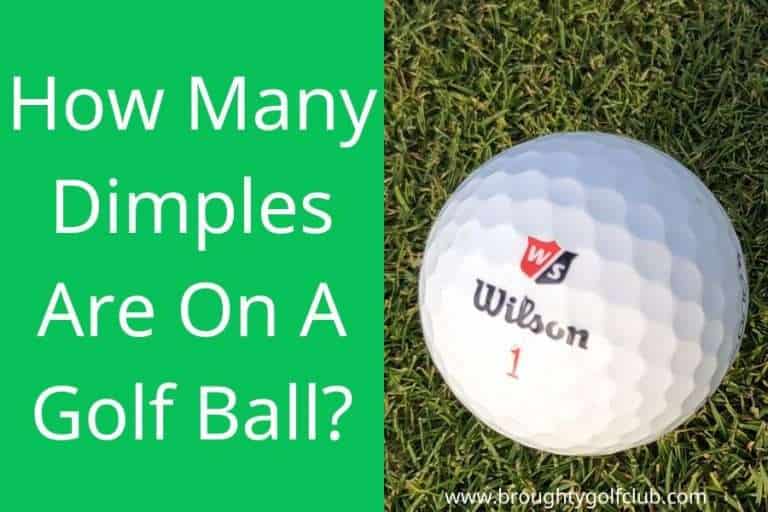What Is Golf Ball Compression?
Golf ball compression is a term that gets bandied about by lots of people who don’t really know what it means.
By the end of this article, you should have a much better idea of what golf ball compression is and how it is relevant to your golf game.
What Is Golf Ball Compression?
When you strike a ball with your golf club the ball will actually change shape for a fraction of a second. You can see this in the video below.
The ball will flatten against the clubface. This is compression. When discussing the performance of different balls it’s useful to be able to compare them. One way to do this is by looking at how much the ball compresses. A low-compression golf ball will be squishier than a high-compression ball.
This just means that you need to have a higher swing speed to change the ball shape as much if it is a higher compression ball. A lower compression ball will feel softer to a wider range of golfers. A high compression ball will feel firmer to golfers that don’t have faster swings.
Of course golf balls aren’t hollow and the materials inside the ball are designed to generate the right combination of ball speed and spin.
Is There A Standard For Golf Ball Compression?
One of the problems with talking about specific compression numbers is that golf ball manufacturers don’t all adhere to the same standard for measuring or reporting the compression of their products.
While it’s fair to say that you can be confident of the relative compressions of balls from a particular company you can’t make direct comparisons between different companies.
In fact, they may well not even be measuring compression in the same way. Some may be referring to the compression of the ball as a whole while others may be referring to the compression of the core.
Twenty to thirty years ago you might see the compression printed on your ball. Titleist for example produced balls marked as 90 or 100 compression rating.
These days most manufacturers don’t even quote a specific figure and just give more generic terms such as low or medium compression. Over recent years there has been a definite trend toward soft feeling balls since this appears to be what golfers are looking for. Generally speaking, a soft ball will be lower compression one.
Another reason why manufacturers don’t tend to get too specific is that there can still be quite a large discrepancy even with the same model of ball as it leaves the factory. Mygolfspy in particular has spotted a number of variances during their testing. If you are looking for a way to compare the compression of different balls then you should probably check out their ball testing.
Dean Snell, who worked for Titleist for many years and now produces his own line of balls has commented on how different the compression of golf balls can be.
Does Golf Ball Compression Affect Distance?
The perceived wisdom has always been that low compression golf balls were best for slower swingers while high compression balls were best for fast swingers.
Testing has shown however that even for players with lower clubhead speed a ball with higher compression will tend to travel further than one with a lower compression.
For players with faster swing speed, the difference will tend to be greater. Basically, you will be sacrificing distance for feel.
Does Weather Affect Golf Ball Compression?
The materials inside a ball won’t react quite the same at lower temperatures which will likely cost you some distance. With that in mind, some might suggest switching to a lower compression ball in order to even things out.
With modern solid core balls that is probably not the best decision. Years ago different balls might be available in different compressions so you could drop from the 100 version to the 90. These days you would have to change to a completely different model which may have other characteristics that aren’t so suited to your swing.
According to Titleist, you will lose 1.5% for every 20°F ( 11°C) reduction in temperature. However, since the lower compression golf ball wouldn’t have gone as far in the first place it probably won’t make a significant difference.
If you do find yourself playing in colder weather then the best solution is usually to alternate between two balls every other hole keeping one in your pocket to keep it as warm as possible. That way you shouldn’t see quite as big a drop-off in distance.
| Distance at 70°F (21°C) | Distance at 50°F (10°C) | Distance at 30°F (-1°C) |
| 125 | 123.125 | 121.25 |
| 150 | 147.75 | 145.5 |
| 175 | 172.375 | 169.75 |
| 200 | 197 | 194 |
| 225 | 221.625 | 218.25 |
| 250 | 246.25 | 242.5 |
What Compression Rating Do Professionals Use?
Given that the overwhelming majority of male tour professionals (PGA Tour, DP World Tour) have high swing speeds they are going to want to play with a firmer ball that will perform best with their type of golf swing.
The most popular balls on professional tours are:
| Manufacturer | Model | Played By | Compression (MyGolfSpy) |
| Titleist | Pro V1 | Scottie Scheffler | 86 |
| Pro V1x | Justin Thomas | 96 | |
| Pro V1 left dot | Adam Scott | 90 | |
| Pro V1x left dash | Wade Ormsby | 102 | |
| Srixon | Z-Star | Inbee Park | 88 |
| Z-Star XV | Hideki Matsuyama | 95 | |
| Z-Star Diamond | Brooks Koepka | 95 | |
| Callaway | Chrome Soft X | Xander Schauffele | 96 |
| Bridgestone | B X | Matt Kuchar | 96 |
| B XS | Tiger Woods | 84 | |
| TaylorMade | TP5 | Collin Morikawa | 88 |
| TP5x | Rory McIlroy | 93 |
As much as the manufacturers would love you to play one of their premium tour balls may be that they aren’t necessarily the best choice for your own golf game. For example, if you tend to generate a lot of spin due to poor swing mechanics you probably don’t want to play a high-spinning ball as well that will almost certainly cost you distance and probably accuracy too.
What Compression Golf Ball Should I Use?
Picking a ball often comes down to a compromise between performance and feel. If you’re prepared to give up a little distance in order to get a softer feeling ball then you can look at lower compression models. If you’re more concerned with performance then try to match the best ball to you based on spin and flight characteristics.
Most manufacturers would probably recommend picking a ball by working backward from green to tee.
Find a few different ball models that you like when putting, chipping and pitching. Find balls that perform the way you want. Then take a look at how they perform with your irons and fairway woods. Do you get the flight and distance that you desire? Finally, test out this shortlist of balls with your driver to see which you prefer. You then need to decide which areas of your game are most important and picked the ball that works best for those.
If you tend to generate a lot of spin then getting a ball with a lower compression rating might help as it will probably spin a little less.
What’s The Difference Between Low Compression Vs. High Compression?
Put simply low compression balls will feel softer off the clubface at any swing speed compared with higher compression. In the past, low compression balls were aimed primarily at slower swingers like seniors or ladies. These days all manufacturers are producing soft-feeling balls because that is what many golfers are asking for.
Lower handicappers and those with faster golf swings would tend towards higher compression models. Since they are usually looking for the balls that travel the farthest and spin the most.
Golf Ball Compression Chart
MyGolfSpy tests many balls annually and uses the same equipment to test their compression. If you want to compare the ratings of different balls then this is probably the place to go.
What Low Compression Balls Are Popular?
The Chrome Soft from Callaway is one of the softest tour style balls available. Although tour players contracted to Callaway only seem to use the X and X LS versions.
Callaway makes the Supersoft ball which is one of the best-selling low compression models. You could also test out these Srixon Soft Feel or the Titleist Velocity or TruFeel.
Golf Ball Compression: Conclusion
You should now have a better idea of what compression is and how it can affect your performance on the golf course.
Compression is not as important a factor in deciding what ball to play as it was some years ago.
Spin and ball flight are probably more critical in finding the right ball for your game.
Frequently Asked Questions [FAQ]
Do Low Compression Golf Balls Go Further?
Testing seems to indicate otherwise. Certainly, MyGolfSpy.com maintains that “softer = shorter”.
Even slower swing speeds will probably get more distance with a high compression ball.
What Is The Highest Compression Golf Ball On The Market?
Based on MyGolfSpy testing the Titleist ProV1x Left Dash is the highest compression ball on the market at 102.
What Is The Lowest Compression Golf Ball On The Market?
At the time of writing and according to my research, the Wilson Duo Soft has the lowest compression with a rating of 35. MyGolfSpy has it down as 42.
What Is The Compression Of The Titleist Pro V1 And Pro V1x
Titleist doesn’t provide golf ball compression ratings preferring to use terms like ‘firm’, ‘soft’ and ‘very soft’.
The 2021 models have ratings of 86 and 96 respectively according to MyGolfSpy.
Is A Higher Compression Golf Ball Better?
The best ball for you is the one that suits your game. Higher compression balls will tend to go further and spin more for all players. You might generate too much spin so in that case a low compression ball would probably be better for you.








